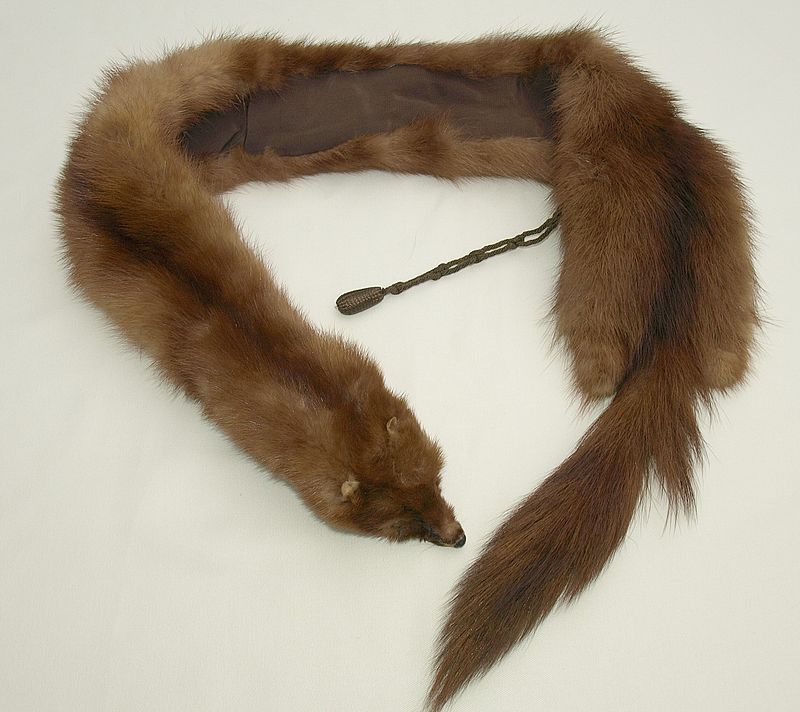Throwback Thursday is when we trawl through the That's archives for a work of dazzling genius written at some point in our past. We then republish it. On a Thursday.
You may have seen a lightning fast blur of fur flash across your path and thought ‘That’s not a cat?!’ You may even have got a little closer and found a creature so confident it bordered on arrogant, holding eye contact for several seconds before, utterly unperturbed by your presence, getting back down to business.
Meet the Siberian weasel.
You should be pleased to make it acquaintance, too, for its business – in urban areas at least – is catching rats. Called a huang you 黄鼬 in Chinese, meaning 'yellow ferret', colloquially they are known as huang shu lang 黄鼠狼, literally translating as 'yellow rat wolf.'
In contrast to their relative, the sable, which is an ambush predator, Siberian weasels are active hunters, readily chasing prey through snow, logs, water and – in a city – peoples’ houses. But rather than being seen as an intruder, their hunting prowess is such that they have been harnessed by authorities in cities such as Shanghai to clean up areas whose rodent problem is out of control.
“We catch weasels in cages and then send them over to places like supermarkets to help catch rats there,” explains Dr. Sun Aiguo of the Shanghai Center for Disease Control. “We will also catch weasels in a certain community and then transport them to and set them free in a rat infested community. Around 20 have been caught in Yangpu District communities.”
Dr. Sun says weasels are not viewed as vermin themselves.
“They do eat food, but generally speaking they are good animals because they do more good than harm. They do no harm to human beings and we’ve never killed them.”
With a plentiful diet of rats, they can also grow to quite a size, “The biggest weasel we ever caught was as big as a cat,” says Dr. Sun. “They eat everything.”
How to Spot One

Siberian weasels have long, stretched out bodies with relatively short legs. Their heads are elongated, narrow and relatively small, while their tails represent half their body length. Adult males are 28–39cm long with 15–21cm tail and weigh 650-820g, while females reach 25-30cm with 13-16 cm tails and weigh 360-430g. Siberian weasels are monotone in color, being off white or slightly ochreous, with tails more brightly colored than the back, while the front of the muzzle is darker than the remaining parts of the head.
Where They Live

A medium-sized species of weasel native to a large swath of Asia, Siberian weasels are not fussy about their shelters, and are known to use and enlarge the dens of other animals. The length of their burrows range from 0.6-4.2 meters and are 0.2-1.3 meters deep. The nesting chamber, which is located in the middle or end of the passage, is lined with bird feathers and rodent wool. Beside a permanent burrow, they will have up to five temporary shelters several kilometers apart.
Relationships with Humans

While useful for limiting rodent populations, a Siberian weasels that get into a roost of domesticated fowl or pigeons will sometimes kill more than it can eat.
They are also valuable furbearers, being harvested in its natural state, and to imitate the fur of more valuable species. The fur also makes for fine water color or oil paint brushes, and is especially sought after by artists.
Siberian weasels are extremely aggressive when caught in traps, emitting piercing shrieks and letting loose a pungent secretion which it is said takes a month to wash away. In Chinese folklore, the Siberian weasel is viewed as a wandering spirit that can steal and replace people’s souls.
Also Seen on the Edge of Town...
Raccoon Dog

Named for their resemblance to the North American bandit (although not closely related) the omnivorous he 貉 can be found on the outskirts of town in Pudong, Fengxian and Jiading Districts. Growing up to 70cm long they, have strong adaptation ability (though not as strong as weasels) and, along with the North American gray fox, are one of only two members of the Canidae family to regularly climbing trees.
Hog Badger
.jpg)
Also known as the hog-nosed badger, the bear-pig and the sand badger, and in Chinese zhu huan 猪獾, this creature derives its names from its two distinctive black stripes on an elongated white face and pink, pig-like snout. Found where the city meets the countryside, the hog badger is around 65cm long with a 15cm white tail and is a nocturnal omnivore, its diet consisting of fruits, roots and small animals.
[Cover image via conifer/Flickr]
This article first appeared in the April 2012 edition of That's Shanghai. For more Throwback Thursdays click here.






















1 User Comments